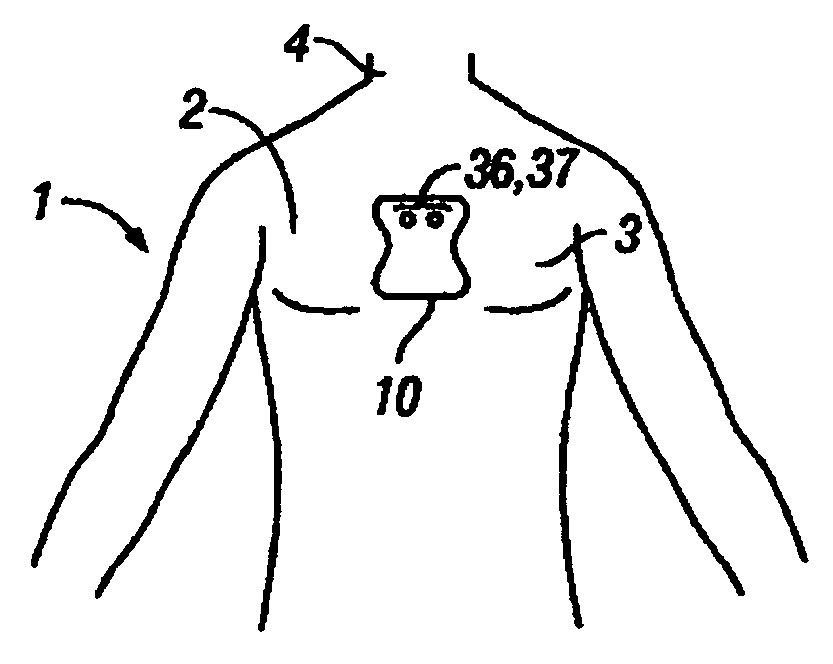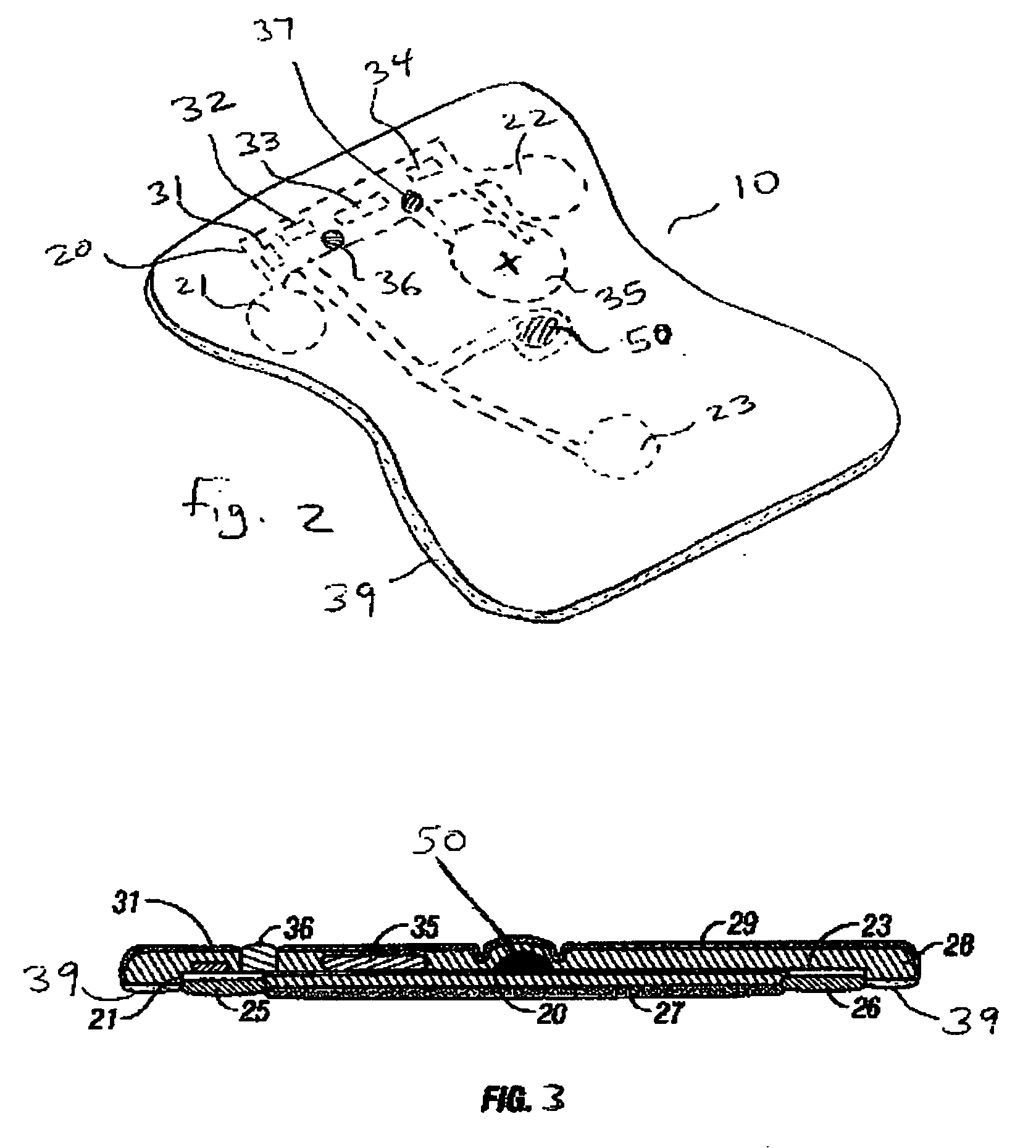Disposable extended wear heart monitor patch
a heart monitor and patch technology, applied in the field of electronic heart scan and detection, can solve the problems of more damage to the heart, lower quality of life for survivors, and higher hospitalization costs, so as to minimize possible skin contamination and infection, improve diagnostics, and save costs
- Summary
- Abstract
- Description
- Claims
- Application Information
AI Technical Summary
Benefits of technology
Problems solved by technology
Method used
Image
Examples
Embodiment Construction
[0033] The invention, shown in various embodiments of FIGS. 1-9 is a disposable non-invasive patch for detection of intermittent cardiac abnormalities. The patch 10 is thin, flat, and flexible for placement on the chest area 2 of a person 1 whose heart is being examined for possible abnormality. The sensor patch relies on a surface electrocardiogram (ECG) for detecting and analyzing non-invasively the electrical activity of the heart. The smart patch is fully self-contained and self-powered. The patch analyzes the ECG for an extended period of time depending on the application. Patterns of ECG abnormalities are recorded automatically and a report is generated by the patch and transmitted to a reporting device directly. The sensor patch is low cost for disposable applications and self-administration.
[0034] Referring to the embodiment of FIGS. 2 and 3, the sensor patch 10 comprises three ECG electrodes 21, 22, and 23, an ECG amplifier 31, a processor 33, and a battery 35. The process...
PUM
 Login to View More
Login to View More Abstract
Description
Claims
Application Information
 Login to View More
Login to View More - R&D
- Intellectual Property
- Life Sciences
- Materials
- Tech Scout
- Unparalleled Data Quality
- Higher Quality Content
- 60% Fewer Hallucinations
Browse by: Latest US Patents, China's latest patents, Technical Efficacy Thesaurus, Application Domain, Technology Topic, Popular Technical Reports.
© 2025 PatSnap. All rights reserved.Legal|Privacy policy|Modern Slavery Act Transparency Statement|Sitemap|About US| Contact US: help@patsnap.com



